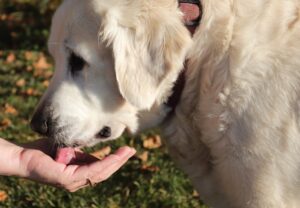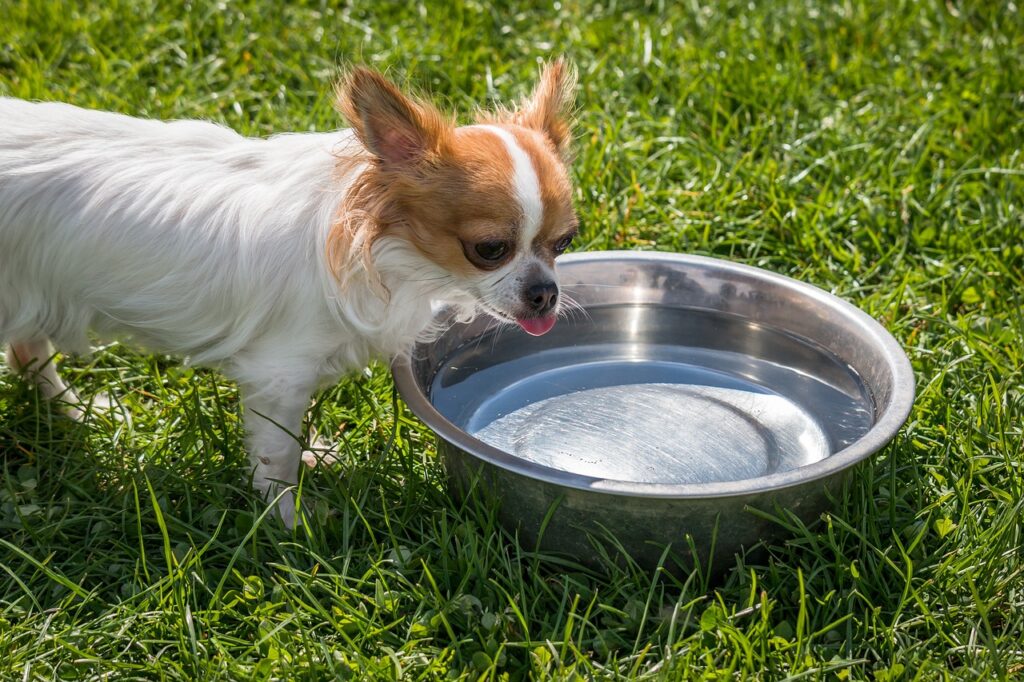Have you ever wondered how to get a dog to drink water? Do you find yourself constantly worried about whether your furry friend is staying properly hydrated? Fret not, because we have the answers you’re looking for!
In this article, we’ll dive into the whys, the how’s, and the creative hacks to ensure your canine companion gets the H2O they need.
So, sit back, relax, and let’s get your dog’s hydration on track!
Table of Contents
Why is hydration important for dogs?
First and foremost, let’s tackle the big question: Why is hydration so crucial for our four-legged friends? Just like us humans, dogs’ bodies consist of around 60-70% water, making it an essential component of their overall health. Proper hydration helps:
- Regulate body temperature
- Transport nutrients throughout the body
- Lubricate joints and muscles
- Aid digestion
- Flush toxins from the body
In short, without sufficient water intake, your dog’s overall health and well-being will be compromised, so it’s essential to keep their water bowl filled and enticing.

Common reasons dogs refuse to drink water
Sometimes, dogs can be as stubborn as a mule when it comes to drinking water. But why? Here are some common reasons:
- Medical issues: If your dog suddenly stops drinking water, it could be a sign of an underlying health problem. Consult your veterinarian to rule out any medical concerns.
- Taste or smell: Dogs have a keen sense of taste and smell. If the water tastes or smells off, they may refuse to drink it.
- Unfamiliar surroundings: Dogs may be hesitant to drink water in new or unfamiliar environments, such as when traveling or moving to a new home.
- Fear or anxiety: Some dogs may be afraid of their water bowl, especially if it’s made of metal or if it’s placed near a noisy appliance.
- Playing in bowl: Dogs sometimes tend to dig in their water bowls, spilling it.
Once you identify the issue, you can tailor your approach to getting your dog to drink more water.
Choosing the right water bowl or dispenser
Believe it or not, the type of water bowl or dispenser you use can make a world of difference. To make your dog’s drinking experience more enjoyable, consider these factors:
- Material: Opt for a bowl made of stainless steel, ceramic, or BPA-free plastic. These materials are not only durable but also less likely to affect the taste or smell of the water.
- Size: Choose a bowl that’s appropriately sized for your dog. A bowl that’s too small may not hold enough water, while a bowl that’s too large may be intimidating for smaller dogs.
- Location: Place the water bowl in a quiet, easily accessible area, away from distractions or potential sources of fear.
Tips to encourage your dog to drink more water
Ready to roll up your sleeves and get your dog to drink more water? Here are some tried-and-true tips:
- Keep it fresh: Change the water in your dog’s bowl at least once a day, and clean the bowl regularly to avoid bacteria buildup.
- Offer multiple water sources: Place several water bowls throughout your home, so your dog has easy access to water at all times.
- Temperature matters: Some dogs prefer cold water, while others enjoy room temperature water. Experiment to find your dog’s preference.
- Flavor the water: Consider adding a splash of low-sodium chicken or beef broth to the water. Make sure it doesn’t contain ingredients toxic to dogs, such as onion or garlic.
- Praise and reward: Positive reinforcement goes a long way. Praise your dog when they drink water and offer a small treat as a reward.
Hydration hacks: creative ways to get your dog to drink water
If traditional methods aren’t working, it’s time to think outside the box. Here are some creative hacks to encourage your dog to drink more water:
- Ice cubes: Offer your dog ice cubes as a crunchy, hydrating treat. You can even freeze low-sodium broth or water mixed with a bit of dog-safe fruit puree for an extra tasty treat.
- Doggy ice cream: Whip up some homemade doggy ice cream using ingredients like plain yogurt, mashed banana, and peanut butter. This tasty treat will help keep your dog hydrated and happy.
- Hydrating toys: Invest in toys designed to hold water or be frozen, such as water-filled chew toys or freezeable treat-dispensing toys.
- Water fountains: Some dogs are more inclined to drink water from a flowing source, so consider purchasing a pet water fountain.
- Incorporate water-rich foods: Add water-rich fruits and vegetables to your dog’s diet, such as watermelon (remove seeds and rind), cucumber, or zucchini. Always consult your veterinarian before making any changes to your dog’s diet.
Recognizing and addressing dehydration in dogs
Dehydration can be dangerous for dogs, so it’s essential to recognize the signs and address them promptly. Some common symptoms of dehydration in dogs include:
- Sunken eyes
- Dry, sticky gums
- Loss of skin elasticity
- Lethargy
- Loss of appetite
If you suspect your dog is dehydrated, provide them with water immediately and consult your veterinarian for further guidance.
Key Takeaways
Ensuring your dog stays properly hydrated is crucial for their overall health and well-being. Remember these key takeaways:
- Understand the importance of hydration for your dog’s health
- Identify the reasons your dog may not be drinking enough water
- Choose the right water bowl or dispenser to encourage drinking
- Employ various tips and creative hacks to get your dog to drink more water
- Recognize and address dehydration in your dog
With persistence and a little creativity, you can successfully encourage your dog to drink more water and maintain a healthy, happy lifestyle. Happy hydrating!


Dennis and Becca, have always shared a passion for man’s best friend. As dog enthusiasts, they put together articles that inform, engage, and captivate fellow dog lovers.